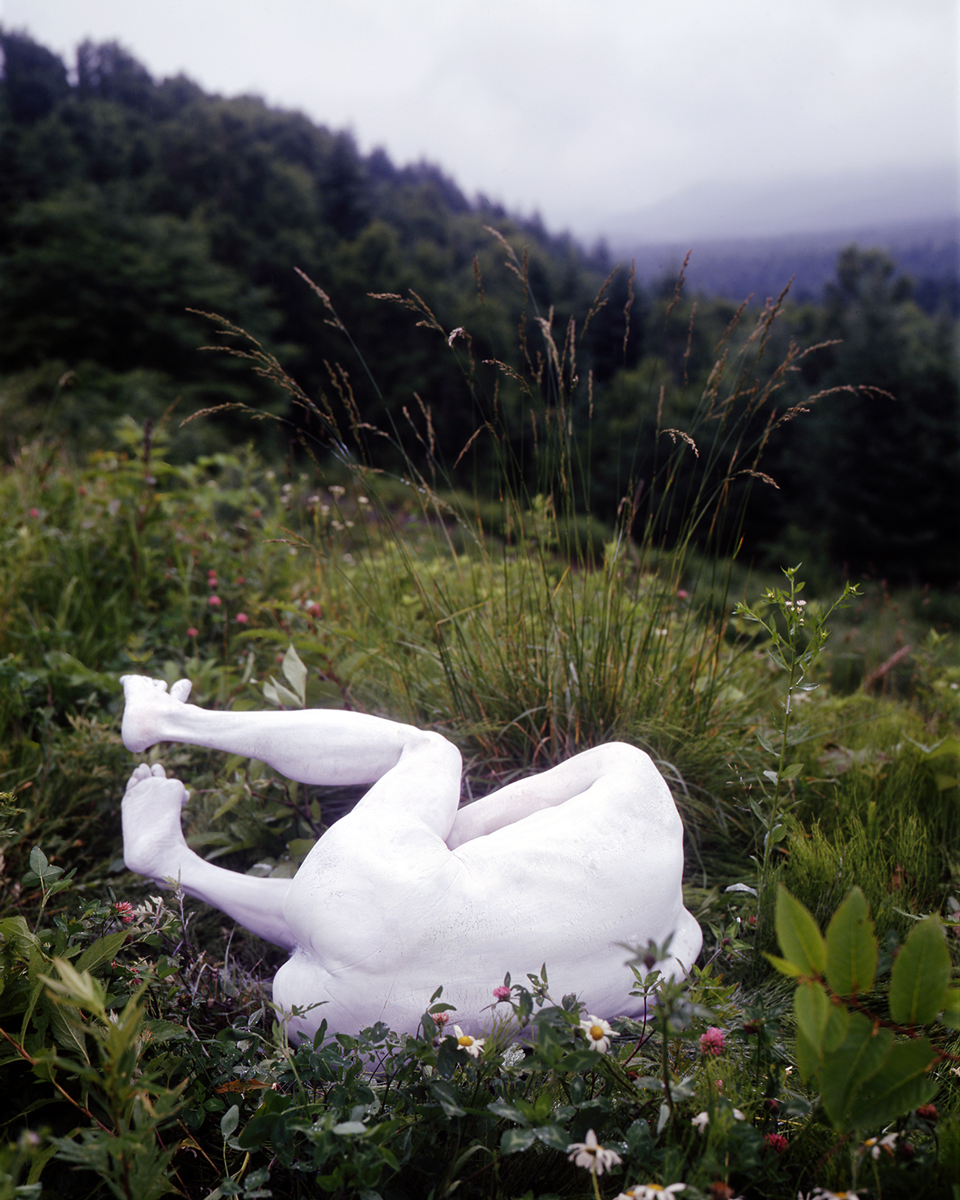Request for Donations
The Butoh-Kaden Website Committee kindly requests donations to assist with the construction and maintenance of our website.
Our promise to Yukio Waguri (1952-2017)
Yukio Waguri passed away on October 22, 2017, at the age of sixty-five. This was only three days after his final performance at Kyoto Seika University. Waguri was the disciple of butoh founder Tatsumi Hijikata. He was himself both a dancer and choreographer, but he also disseminated Hijikata’s butoh-fu (‘butoh notation’) and the secrets of Hijikata’s butoh method through his Butoh Kaden CD-ROM (1998) and his work as an international butoh teacher.
Following Waguri’s death, his loved ones, disciples, and friends decided to establish a Committee and to make his Butoh Kaden available online according to his wishes. We launched this website on Wednesday February 26, 2020. Had Waguri been alive this would have marked the date of his 68th birthday.
We decided to do so out of a promise we made to Waguri during his lifetime. There may be some overlap with other contents covered by the website in what follows, but we feel it is worthwhile to give a simple overview of Butoh Kaden here.
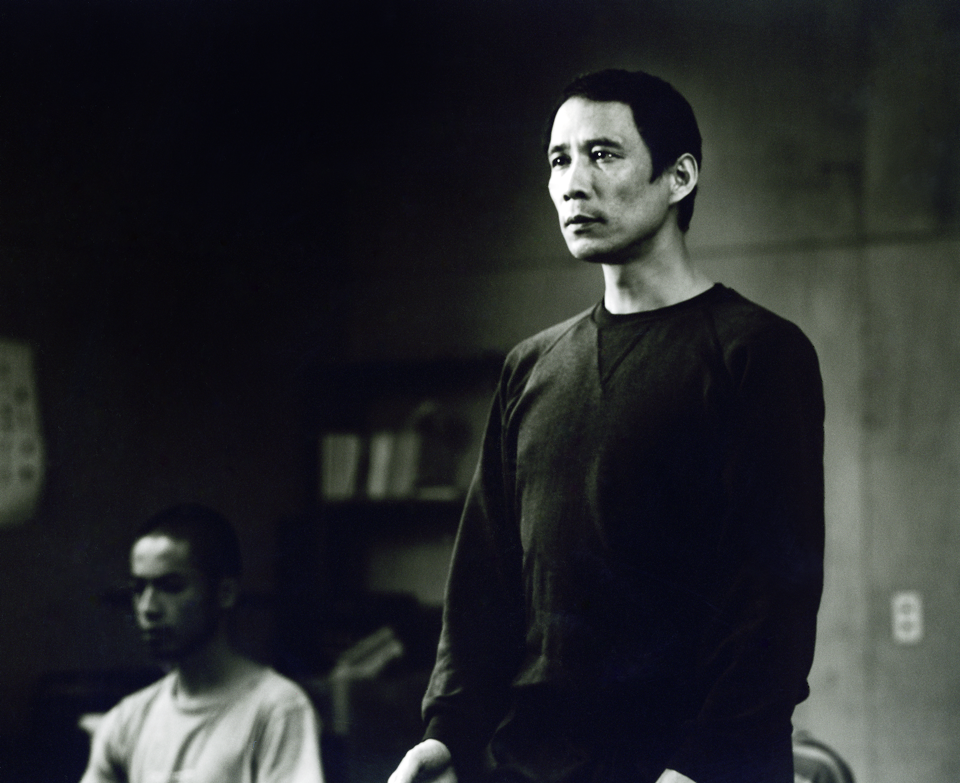
Tatsumi Hijikata and Butoh Notation
In 1973, the founder of butoh dance, Tatsumi Hijikata, left the stage behind him and turned his focus to choreography in what has been termed the ‘Second Unity of the School of the Dance of Utter Darkness’. During this period, he worked with new dancers, who tended to have no dance experience, choreographing a series of works in quick succession. For this, he used a quick-fire choreographic language. Waguri and Hijikata’s other disciples would record this choreographic language in note form, as a medium of bodily expression.
What, then, is butoh notation? Waguri suggested it was ‘a language codification of butoh choreography’. He continued: ‘butoh-fu is the work of transforming an image that lacks concrete reality into a specific language. One of the characteristics of Hijikata’s exceptional method was the use of visual art as a primary source material.’
Let us now turn to several examples.
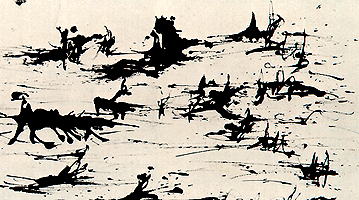
Michaux’s Inkpot
There is an ink pot on the right side of the forehead. It breaks and ink splashes out. Trace the tracks of the dripping ink. It drips down the temple and the cheek, and then passes the twitching at the side of the mouth and ends at the neck. Quickly grasp the neural feeling that comes from the back and up to the nape of the neck. The delicate nerves of the breast snap.
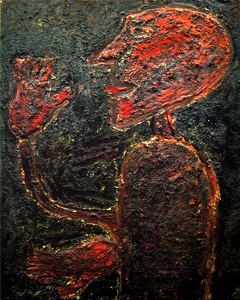
Dubuffet, Walk of Wall-person
Being eaten by insects. Person who is covered over by wall. Person formed only of worn-out crumbling particles. There is a single insect floating in space. In your desiccated rustling internal organs, there is a single insect dancing on a thin sheet of paper. Insects related to particles and rustling. Fragile person, wandering around, who crumbles at the slightest touch.
※For further descriptions please refer to ‘Introduction to Butoh-fu’ and ‘Consideration of Butoh-fu’, included on the website.
Hijikata did not make public his butoh-fu, which can be thought of as the script for his butoh dance. As a result, there was a period when people believed butoh dance had no directorial script. Hijikata’s butoh-fu, which brought together ‘language’, ‘visual art’, and ‘bodily expression’, represented a landmark in the history of performance methods.
On his deathbed, Hijikata apparently said to Waguri “only you can disseminate this invention to the world”. Not long after this, Waguri established ‘The Hijikata Study Method Group” at Asbestos Studio, which had been Hijikata’s base, and began to offer workshops and choreograph works using Hijikata’s butoh-fu, as well as order the vast quantities of choreographic notes that make up Hijikata’s butoh-fu. This labour was later realised as Butoh Kaden.
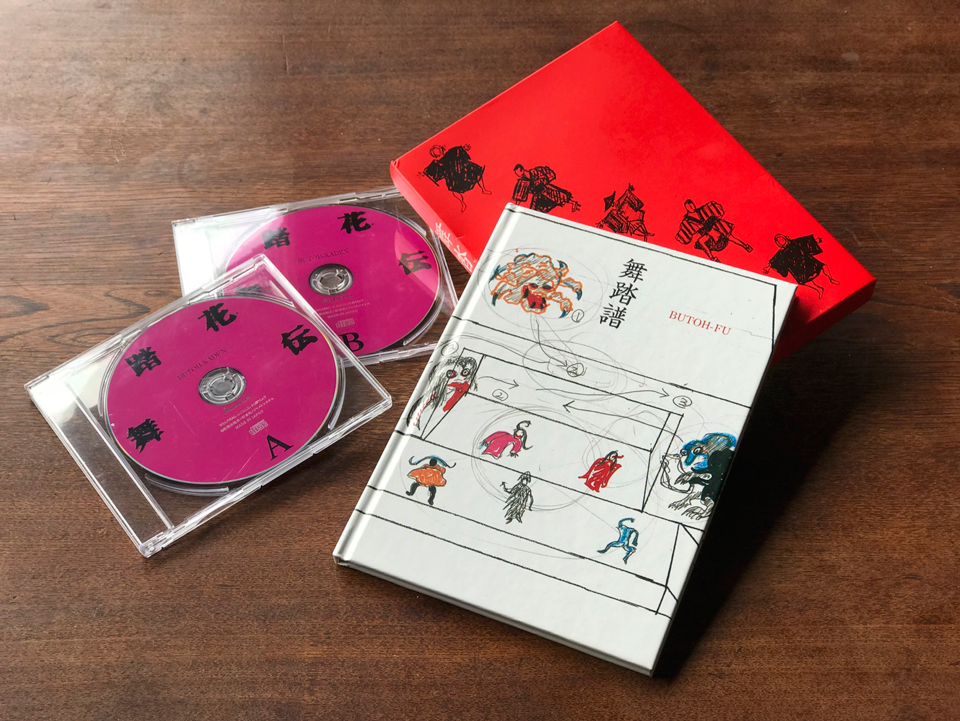
Yukio Waguri and the ‘Butoh Kaden’ CD-ROM
Yukio Waguri took the butoh-fu he had learned from Hijikata and systematized it, based on his experience as a dancer, into ‘Seven Worlds’, which made it more accessible to others. This work of taking Hijikata’s ground-breaking butoh-fu and adding to it, can be understood as a creative labour in itself. Through a contact at the company JustSystems, Waguri was able to release the multimedia CD-ROM of Butoh Kaden based on his systematized butoh-fu. This was effectively the first time Hijikata’s butoh-fu had been made available to the world. Its release date was January 1998, on the thirteenth anniversary of Hijikata’s death. It has been over 20 years since that date. Those among you who have been long-time audiences to butoh may remember the Butoh Kaden launch event at the Kinokuniya Southern Theatre.
Until then, butoh had largely been thought of as an improvisational and individualistic artform, with few aware that it was structured by choreography and notation. Since the release of the Butoh Kaden CD-ROM, ‘butoh-fu’, as a term, has started to be used abroad, and there is now more awareness of the existence of ‘butoh-fu’ as a form of language that translates an image into a physical expression. In this way, Yukio Waguri opened up ‘butoh-fu’ to the world.
The poetic language of butoh-fu is often informed by visual artworks. It allows for a transformation between movements via key phrases. A multimedia format that shows the links between movements is the best way to grasp what is unique about butoh-fu: that it is a language replete with references and associations.
Butoh Kaden and Media
The Butoh Kaden CD-ROM was fast outdated with computer developments and changes to the media environment. Within several years of its release, the contents of the CD-ROM were already threatened by disappearance. In response, those involved in the original CD acquired its copyright and created a DVD-ROM version. Although it was never distributed widely through commercial outlets, the Butoh Kaden DVD-ROM was understood to be an invaluable resource for those learning butoh and continued to be purchased over many years as a result. Due to repeated OS updates in the late 2010s, even the DVD-ROM version stopped working on many computers. In response, Butoh Kaden created a simplified iOS version for use on an iPhone, but this too became redundant through repeated iOS updates.
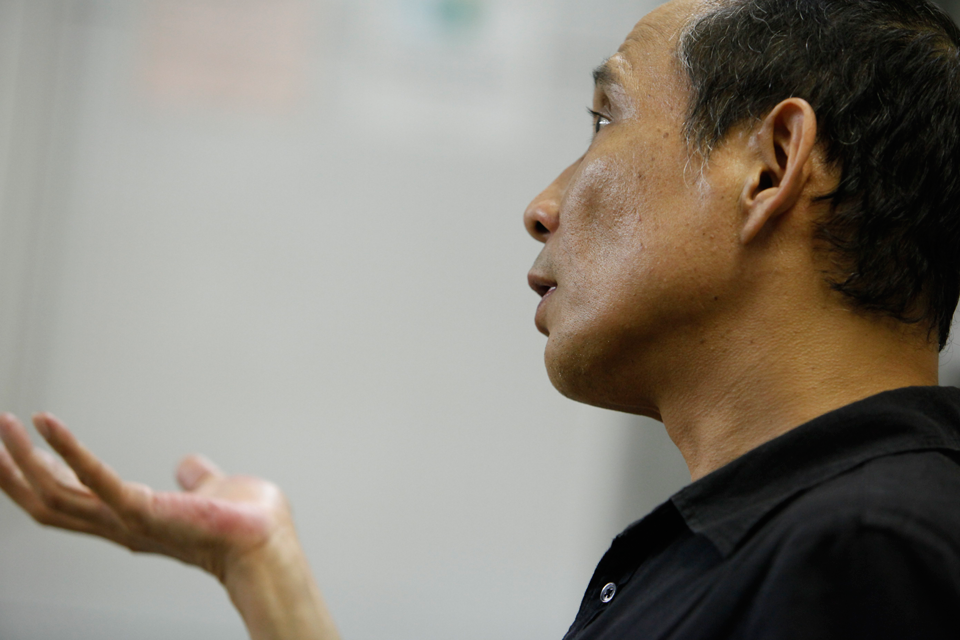
Realising Yukio Waguri’s Wishes for Butoh
Released in bilingual (Japanese-English) format from the outset, Butoh Kaden was well received internationally as the only resource that allowed people to access butoh behind-the-scenes. It resulted in Waguri being invited to offer guest lectures and workshops by universities and companies worldwide. In response to Waguri’s new international network of students and contacts, he wanted to make Butoh Kaden openly available to people online rather than as a standalone app.
He discussed this idea in May 2017 with those who had been involved in Butoh Kaden over the years. His plan was to launch the Butoh Kaden web version once he finished his schedule of performances that Autumn, but sadly he passed away in October before this was possible.
His death was far too sudden. But those who admired and loved him had to remain strong. At Waguri’s memorial event “Journey of the Spirit” held at the German Cultural Center in Tokyo in April 2018, the original producer of the CD-ROM announced the founding of the “Butoh-Kaden Website Committee” in order to realise Waguri’s wishes. From here, we formalised the committee and began preparations for the website.
What Does the “Butoh Kaden” Website Mean?
“Butoh notation” offers a new way to interpret and embody the phenomena of the universe. It can offer inspiration to creatives of all kinds, and not only to those who aspire to becoming butoh dancers. It was passed down from Tatsumi Hijikata to his disciple Yukio Waguri, and from Waguri to the next generation. Our aim is to allow many more people to access “butoh notation” directly through creating an open platform. This is our main aim in creating the web version of Butoh Kaden.
By creating a Butoh Kaden website we will finally make accessible contents which had previously become difficult to access. Unlike a standalone app, it will not be rendered inaccessible by changes to computer technologies.
Now that Waguri has passed away, the contents of the website may be revised but they will not fundamentally change. Our aim is to additionally incorporate Waguri’s reflections and “butoh notation” materials since 1998 as well as his own performance history. We also hope that the Butoh Kaden Website can offer a butoh platform that connects Tatsumi Hijikata, through Yukio Waguri, to the next generation.
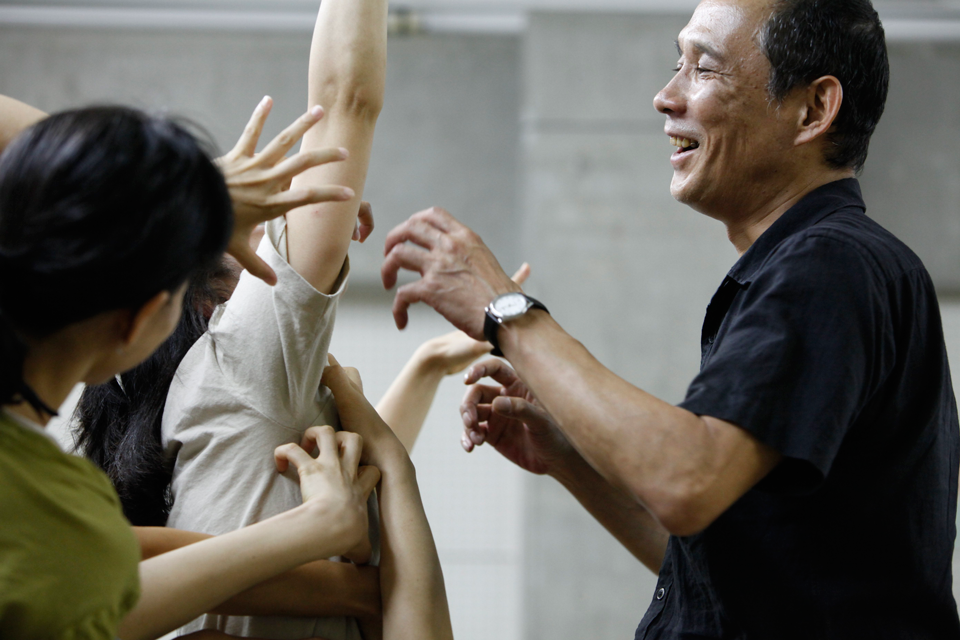
The Future of “Butoh Kaden”
The web version of “Butoh Kaden” has been made possible by Waguri and those close to him. But it is still a minimal version of what it could be. Our larger aim is to make “Butoh Kaden” open and indefinitely accessible, so that people from all over the world are enabled to create new forms of expression inspired by butoh and “butoh notation”. Waguri himself wanted this bilingual website to be made public, and we see this as the fulfilment of that promise.
We will continue to enrich the website with videos and materials that Waguri left behind. Our hope is that you will make good use of the website, discover new stimulation from it, and enjoy exploring it. In exchange, we hope you will support us in continuing to update and maintain the website. We are therefore welcoming donation, and thank you in advance for your support.
The Butoh Kaden Website Committee
February 26, 2020
